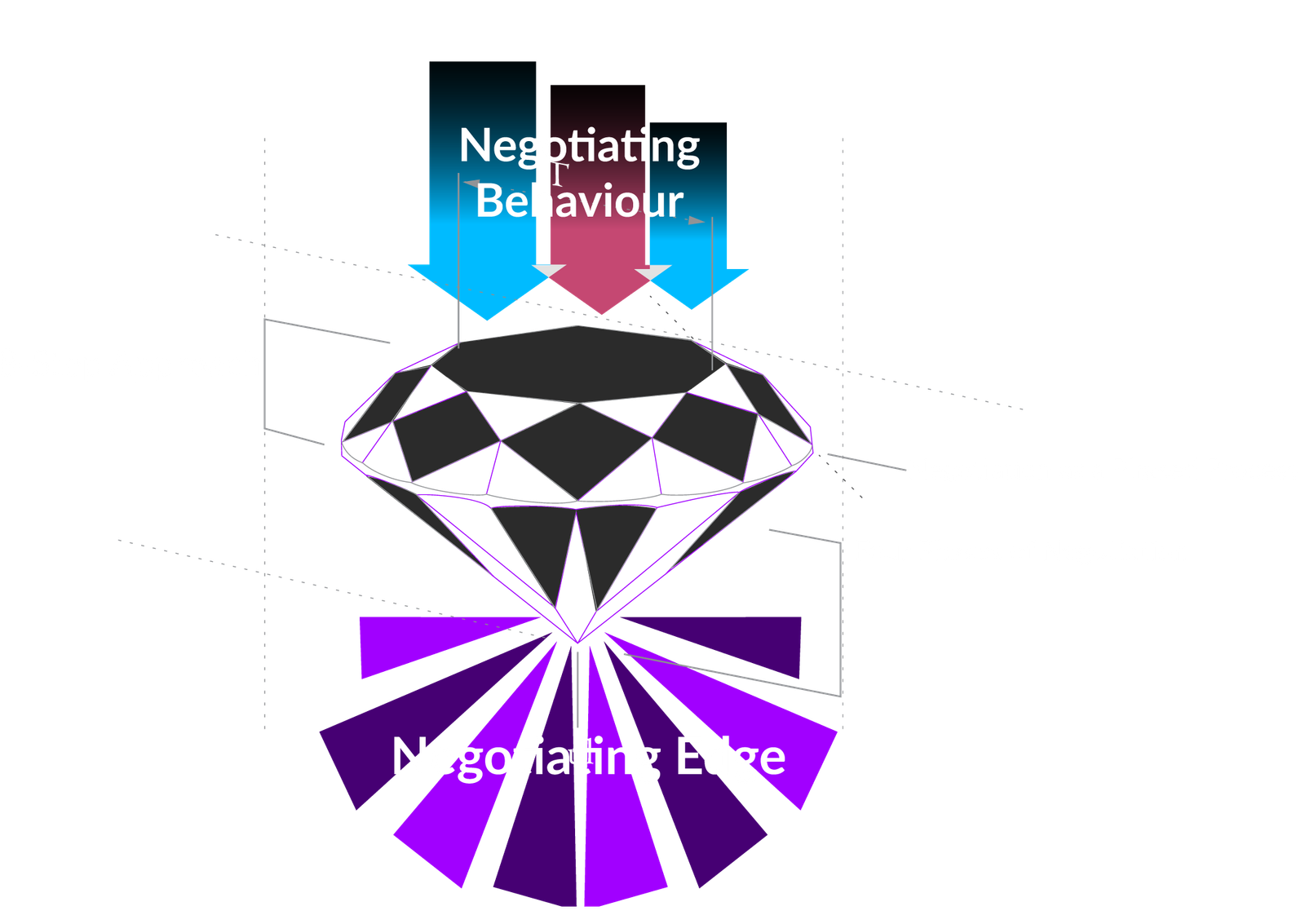
Evidence-Based Negotiation
Negotiation is the ratio of what we want to what they want…

Negotiation is a complex, non-linear process that requires more than a simple alignment of interests. Effective negotiators move beyond reliance on single styles or tactics.
Our methodology develops individuals who can accurately recognize the current phase of a negotiation, manage progress through strategic conditionality, and adapt their behaviour dynamically.
This involves a deliberate balance of flexibility, control, and purposeful intent.
Our methodology is rooted in direct observation of successful negotiation practices and has been refined into a prescriptive, behaviourally-grounded model to guide optimal performance at each stage.
Conceptual, Strategic and Behavioral
- The 4 phases are about where you are (conceptual and strategic) (
- The 8 steps are about what to do (behavioral and detailed)

Each phase reflects how real deals unfold. Each step defines what skilled negotiators actually do under pressure—from how they prepare and signal, to how they package value and close firm agreements.
The structure isn’t rigid. It’s behavioural.
The steps don’t just describe negotiation—they drive it.
Because in Kennedy’s view, results don’t come from charm or consensus.
They come from disciplined movement through a deal—step by step, phase by phase.

Kennedy’s Strategic Deal Framework
Phase: Prepare
Task: What do we want?
Phase: Debate
Task: What do they want?
Phase:Propose
Task: What wants might we trade?
Phase: Bargain
Task: What wants will we trade?
Negotiation as a Phased Process
Phase One-Preparing to Negotiate
Strategic thinking, internal alignment, tradable mapping.
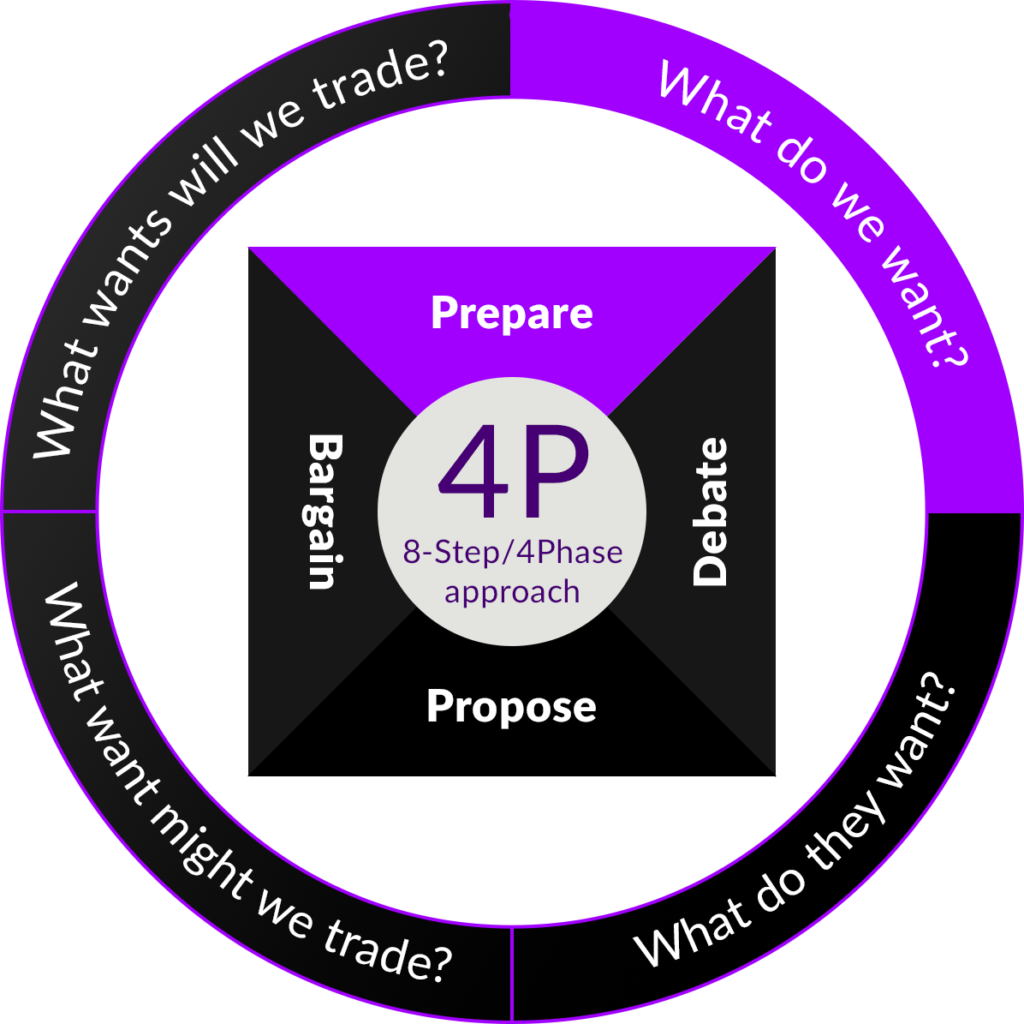
Preparation is often the difference between a good deal and an average deal — or no deal at all
Task: What do we want?
This is where serious negotiators take control — before the room, before the pressure, before the first move.
Want to nail your next negotiation? It all starts before you even sit down. Think of preparation as your strategic advantage – the difference between a killer deal, a mediocre one, or walking away empty-handed.
Effective negotiators are masters of prep. They laser-focus on their goals, know their absolute limits (that walk-away point!), and are crystal clear on what they bring to the table. But that’s just the beginning.
The 8-Step Approach
- The Prepare Step
The Prepare Step 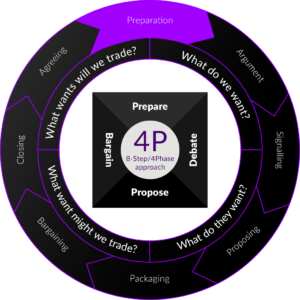
The Kennedy method defines what the deal is really about, what matters most, and what you’ll never concede. You set your stance, pre-load your countermoves, and ensure your team speaks with one voice. It’s not about guessing their game — it’s about forcing them to play yours. Unprepared negotiators don’t lose by accident — they lose by design. Preparation isn’t optional. It’s the edge.
Negotiation as a Phased Process
Phase Two-Debating
Listening, testing assumptions, questioning
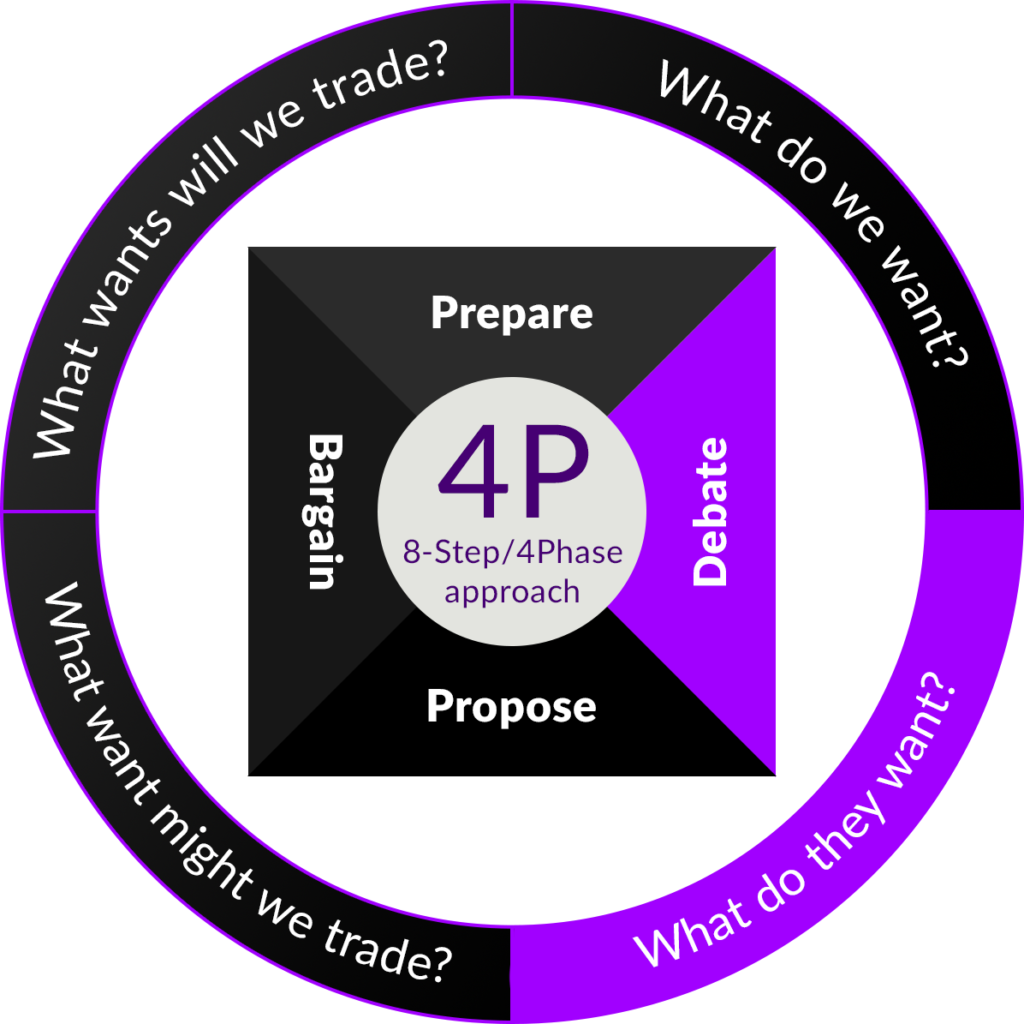
Mess it up here, and you're likely heading for disaster
Task: What do they want?
It’s disciplined discovery. Poor negotiators argue; effective ones uncover leverage
The real power comes from getting inside the other side’s head. What do they want? What are their likely moves? What arguments will they throw your way? By mapping out their potential goals, tactics, and reactions, you’re playing chess while they’re still figuring out the rules.
The 8 Step Approach
- The Argue Step
- The Signal Step
The Argue Step 
Present your case and challenge assumptions — but avoid destructive behavior. Kennedy uses the term “argue” to reflect what people naturally do, but prescribes effective questioning and listening.
The Signal Step 
Negotiation as a Phased Process
Phase Three-Proposing
Packaging, conditionality, and timing

This is where you begin to shape the deal
Task: What wants might we trade?
Ready to move things forward? The Proposing phase is where the action heats up. It’s about putting potential deals on the table – conditional offers designed to test the waters and uncover mutual wins.
Think of it as a strategic dance: “If you give us this, then we can consider that in return”. This is where you explore the possibilities, figure out what you can trade, and start shaping the final agreement before the explicit close.
The 8 Step Approach
- The Propose Step
- The Package Step
The Propose Step 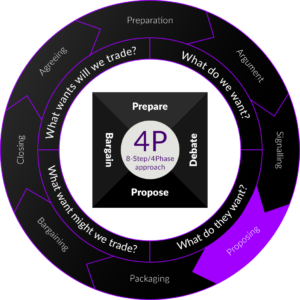
Nothing, absolutely nothing, is given away free. Everything… is conceded in exchange for something else
Every offer is a calculated move that signals, tests, and reshapes the field. Proposals are not commitments — they are instruments of movement. Weak proposals drift. Strong proposals shift the dynamic
The Package Step 
Packaging is about structure & dealing with proposals which have been rejected
Single-issue bargaining gives way to issue bundling. Negotiators combine multiple elements into tradeable packages to increase the chances of mutual gain.
Negotiation as a Phased Process
Phase Four-Bargaining
Concession management, closing discipline, and counter-move readiness

Closing ploys tend to be pressure ploys. and Momentum is building up towards agreement
Task: What wants will we trade?
Bargaining is a search for agreement within ranges of acceptable terms. It includes testing limits, trading, and adjusting packages. This is the final act — where intentions are tested and weakness is punished
Bargaining is precise, conditional, and unforgiving. There is no improvisation — only designed exchanges. You trade, you test, you close.
No concessions are made without returns. No moves are made without intent. This is not where you find the deal. This is where you secure it — on the best terms they’ll accept.
The 8 Step Approach
- The Bargain Step
- The Close Step
- The Agree Step
The Bargain Step 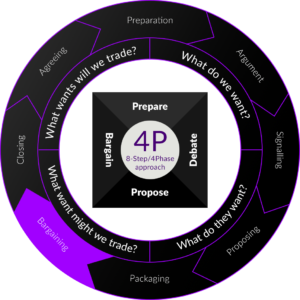
The finish line is in sight! Bargaining is where you fine-tune the details, bridge those last remaining gaps, and make the final trade-offs that lead to agreement. You can feel it – a deal is within reach!
The Close Step 
Don’t let victory slip away. Leaving the table without a signed agreement is risky business. This is the moment to lock it in, finalize the terms, and close with confidence.
The Agree Step 
As the agreement comes together, the tone often shifts. The focus turns to making it work: clear implementation, anticipating potential bumps, and ensuring everyone is on the same page. Get it in writing, seal the deal, and move forward with certainty!
Negotiation is the ratio of
What we want
What they want

Kennedy's Model: Understand the game. Play it better. Win bigger.
Stop guessing, start winning. Kennedy’s behavioral model isn’t just talk – it’s your blueprint for negotiation success. Think of it as a powerful diagnostic tool and the ultimate performance benchmark.
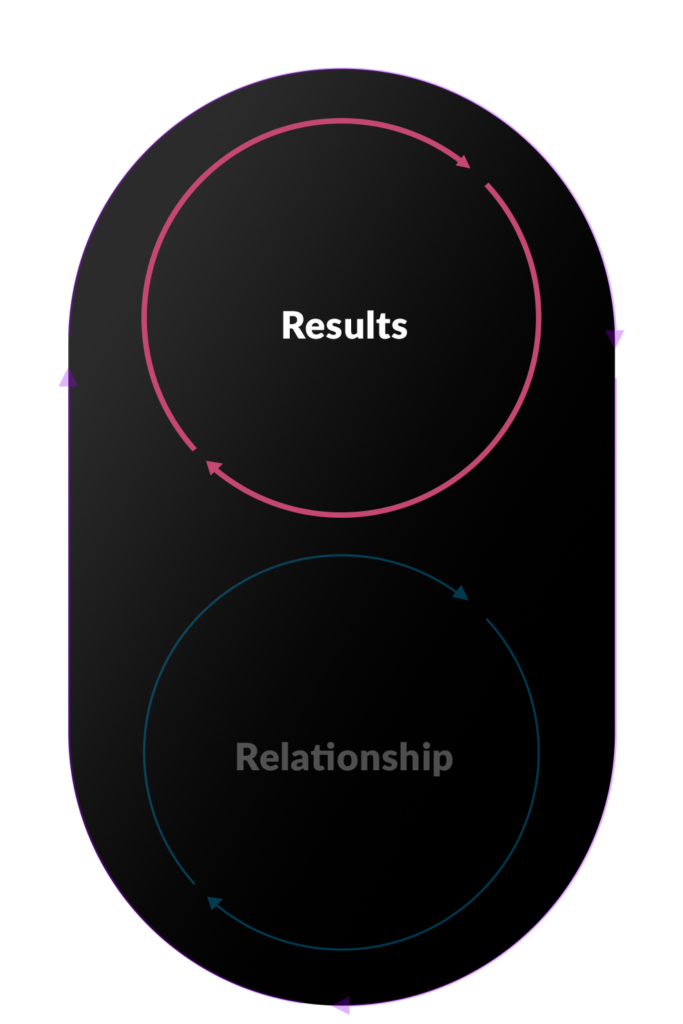
Red Style: Dominate or Destroy (But at What Cost?)
Win at all costs? Red negotiators mistake aggression for power. They aim for a Win/Lose outcome, but their scorched-earth tactics often lead to shaky deals that crumble later. Short-term gain, long-term pain.
Red style is not solely a set of behaviours. It is an intention to benefit at your expense
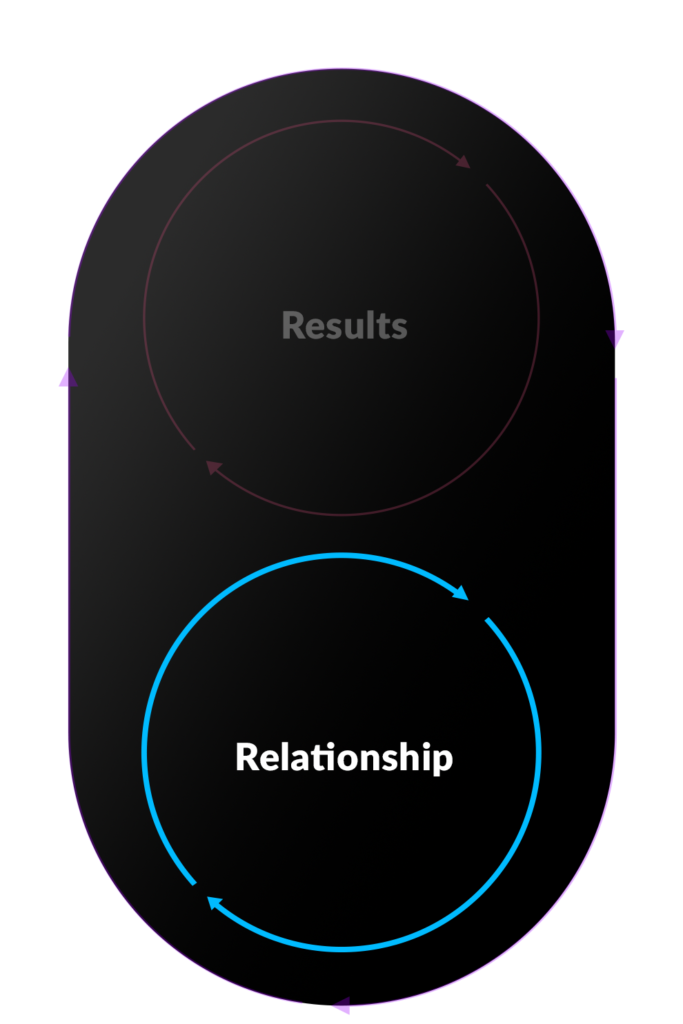
Blue Style: Nice Guys Finish Last (in Negotiation)
Avoiding conflict at all costs? Blue negotiators believe being agreeable is the key. But in the real world, niceness without boundaries is just giving away the store. They prioritize avoiding loss, often at the expense of a win.
In its extreme form, Blue style can become so unselfish as to be positively self-destructive
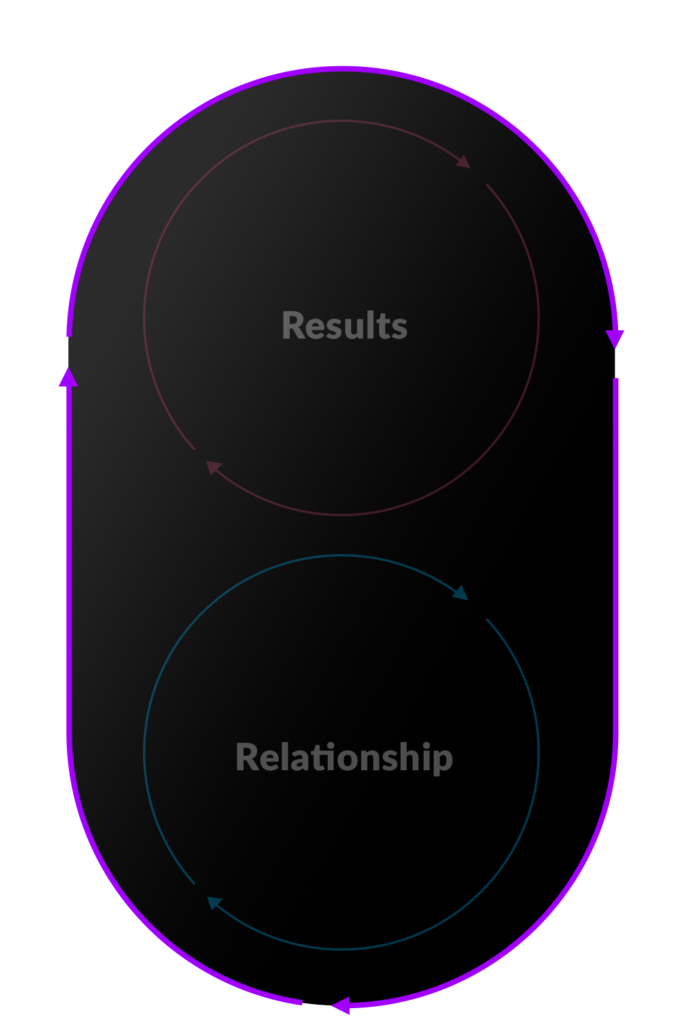
Purple Style: The Art of the Deal - Balanced & Brilliant
Want consistent wins? Purple negotiators are the masters. They understand the game: nothing is given without getting something back. That’s the core of the Purple Principle – balanced, strategic, and consistently high-performing.
Want to close more deals, concede less, and forge agreements that stick?
Then aim to be a Purple negotiator. They consistently outperform the rest.
Purple behaviorists fuse their red demands with their blue offers in a conditional purple format: ‘If you give me what I want, then I can give you what you want








